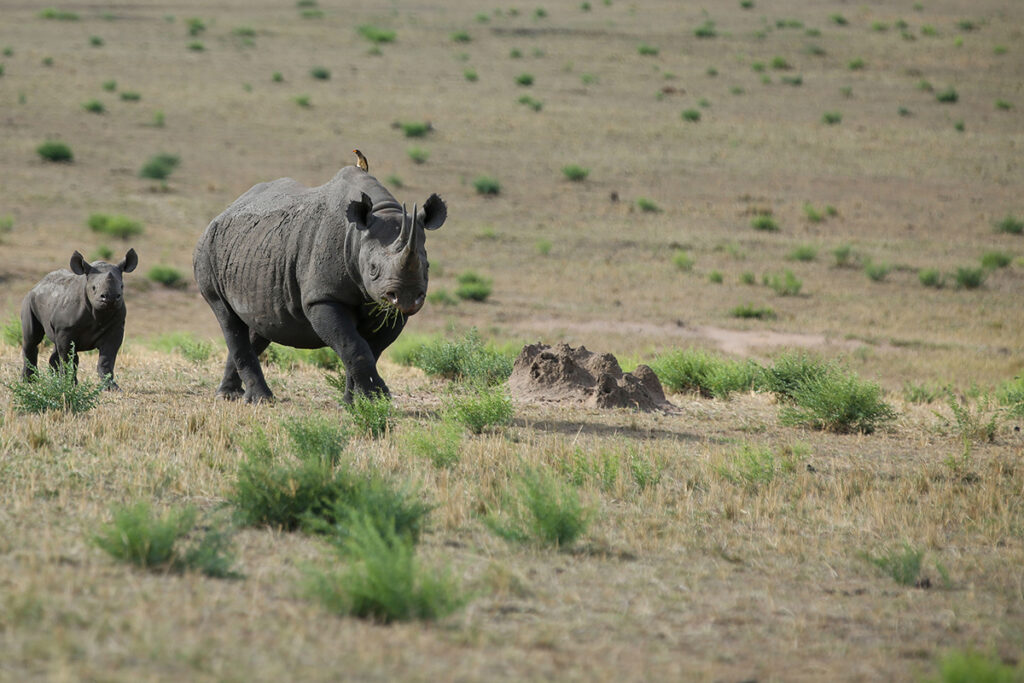In the heart of Tanzania, the Zaramo people represent a vibrant tapestry woven with traditions that span centuries. Astonishingly, despite urbanization pressures, the Zaramo maintain distinct customs reflected in their art, music, and communal practices. Such cultural richness offers invaluable insights into the broader narrative of Tanzania’s diverse populations.
The Zaramo, primarily settled around Dar es Salaam, have a historical legacy dating back to the Bantu migrations. Historically, this tribe played significant roles in the regional trade networks, linking the coast to the hinterlands. Today, they exemplify cultural endurance, as illustrated by their continued practice of traditional music and dance, despite the encroachment of modern influences.

Zaramo Tribe: A Snapshot
The Zaramo tribe is primarily located around Dar es Salaam, Tanzania’s biggest city. With a population of around 500,000 people, the Zaramo have a significant presence in the region. Their origins trace back to Bantu migrations, connecting them to a larger historical narrative of movement and settlement. Throughout history, they have managed to preserve many of their unique cultural aspects despite external influences. This makes the Zaramo tribe a key part of Tanzania’s cultural diversity.
One of the defining features of the Zaramo tribe is their traditional way of life. They engage in farming, fishing, and small-scale trading as their main economic activities. Communal living and social structures are vital to their society. They have a strong kinship system, which significantly influences their social interactions and community governance. You can learn more about their community role according to the article.
Culturally, the Zaramo are known for their vibrant music and dance traditions. These cultural expressions are integral during festivals, weddings, and other important events. Traditional instruments like drums and flutes are commonly used. Dancing is not just a form of entertainment but also a way to communicate and pass down stories. These practices exemplify how they preserve their heritage through performing arts.
The Zaramo language, Kiswahili, is widely spoken, reflecting the tribe’s adaptability and resilience. While many Zaramo people have adopted modern lifestyles, they continue to cherish and practice their cultural customs. This blend of traditional and modern practices makes the Zaramo unique among Tanzanian tribes. To dive deeper into their customs, here is the post.
Explore and Learn Tanzanian Cultures
Historical Perspective of the Zaramo Tribe
The Zaramo tribe’s history is rich with migration stories and settlements. Originating from Bantu migrations, they settled in the coastal regions of Tanzania. The strategic location allowed them to engage in trade along the East African coast. This interaction introduced new customs and traditions, blending with their unique culture. Historical records highlight their adaptability in changing times.
Early Zaramo society was centered around agriculture and fishing, reflecting their connection to the land and sea. Crops such as cassava and maize were staples in their farming practices. This agricultural focus shaped their economy and lifestyle, fostering a close-knit community. Their proximity to the coast enabled lucrative fishing activities, sustaining their livelihood. These economic activities remain vital today.
As the 19th century approached, the Zaramo played a notable role during the slave trade era. Despite the challenges, they shielded themselves by strengthening community bonds. Oral traditions passed down stories of resilience and resistance. Through songs and tales, they preserved their collective memory. This storytelling tradition continues to be cherished among the Zaramo today.
Throughout history, the Zaramo have embraced change while maintaining cultural continuity. External influences from Arab, Indian, and other African cultures introduced new elements. Yet, the Zaramo skillfully integrated these aspects into their existing traditions. This adaptability has helped them survive and flourish in a dynamic environment. Their historical journey reflects the diverse tapestry of Tanzanian heritage.
Cultural Practices and Customs of the Zaramo Tribe
The Zaramo tribe is known for its distinctive cultural practices that celebrate community and tradition. One of the most significant aspects is their communal living, where extended families reside together. This setup fosters strong familial bonds and a sense of responsibility toward one another. Rituals and ceremonies are a deep-rooted part of their identity, marking life events such as births, marriages, and deaths. These ceremonies serve to reinforce community connections.
Traditional clothing holds symbolic importance in Zaramo culture. Women often wear brightly colored kangas, which are vivid cotton wraps used in daily life and special events. The clothes often feature proverbs and sayings that convey messages of wisdom. Men’s attire is typically simpler, often consisting of long garments such as tunics. Attire provides insight into their values and social structure.
Music and dance are integral to Zaramo social life, offering both entertainment and social cohesion. Performances often feature traditional instruments, including drums and flutes. Dance styles and sounds change depending on the event, showcasing their adaptability and creativity. These art forms are passed down through generations, ensuring the preservation of culture. The vibrancy of their music and dance reflects their active community spirit.
Despite external influences, the Zaramo maintain traditional beliefs and practices. Ancestor worship and spiritual ceremonies remain central to their worldview. Offerings and rituals are conducted to honor ancestors and seek blessings for the future. This connection to their spiritual past guides their daily decisions. As a result, their customs hold invaluable meaning and continue to thrive amidst modern advancements.
Music and Dance in Zaramo Society
Music and dance are vibrant elements of Zaramo society, symbolizing cultural identity and unity. Celebrations and social gatherings always feature lively rhythms and dances. These performances are not just for entertainment; they play a critical role in preserving traditions and educating younger generations. Musical instruments like drums and flutes are commonly used to create captivating melodies. Each beat and move tells a story, connecting the past to the present.
The Zaramo have various dances that serve different purposes and occasions. Some dances are designed for spiritual ceremonies, while others are meant for joyous celebrations. For example, during weddings, special dances are performed to bless the union and celebrate love. In contrast, spiritual dances are more solemn, seeking blessings and guidance from ancestors. This diversity in dance forms highlights the richness of their cultural expressions.
Music in the Zaramo tribe also acts as a medium for storytelling. Songs often contain moral lessons, historical narratives, and social commentaries. These stories educate and inspire listeners, keeping oral traditions alive. Elders play a vital role by composing new songs and teaching them to the youth. This intergenerational exchange ensures that important cultural values are passed down.
The significance of music and dance extends beyond community borders. Zaramo performers are often invited to regional events, showcasing their talents to wider audiences. These performances allow cultural exchange, as the Zaramo share their art with others and, in turn, learn new styles and techniques. This interaction enriches their own cultural repertoire while fostering mutual understanding. By maintaining an open dialogue through music and dance, they continue to thrive in a diverse cultural landscape.
Community participation in music and dance builds strong social ties. People of all ages join in, either as performers or enthusiastic spectators. This inclusivity strengthens the sense of belonging and cultural pride. It’s a joyful way to celebrate life and community together. Such dynamic engagement keeps the Zaramo cultural practices lively and relevant in today’s world.
Role of the Zaramo in Tanzanian Society Today
The Zaramo tribe plays a vital role in the socio-economic fabric of Tanzania. Being primarily located near Dar es Salaam, many Zaramo individuals have adapted to both urban and rural lifestyles. In urban settings, they often engage in professions like trading, education, and healthcare. Meanwhile, in rural areas, agriculture remains a significant occupation. This dual lifestyle reflects their ability to balance tradition with modernity.
Education has become increasingly important for the Zaramo community, contributing to their active participation in society. Schools and educational initiatives have opened doors for the younger generation. As a result, many Zaramo youth pursue higher education and take up key positions in various fields. This advancement not only empowers individuals but also uplifts the entire community. Education serves as a bridge between traditional values and contemporary aspirations.
In Tanzanian politics, the Zaramo have begun to establish a presence. They actively participate in local governance and civic activities. This involvement ensures that their voices are heard and their needs addressed. Such engagement promotes a democratic process where diverse perspectives are considered. It strengthens the nation’s commitment to inclusivity and representation.
Preserving cultural heritage while embracing change is a unique trait of the Zaramo people. Cultural festivals and events continue to be celebrated, attracting interest from both locals and tourists. These gatherings not only highlight Zaramo traditions but also boost local economies through tourism. The tribe serves as a living example of maintaining cultural roots within a rapidly transforming society. Their cultural continuity provides valuable lessons for balancing identity with progress.
Healthcare access and community well-being have drawn focus within the Zaramo. Efforts to improve health services are underway, promoting healthier lifestyles. Community health programs and initiatives aim to reduce health disparities. The role of traditional medicine remains notable, blending with modern healthcare approaches. Such efforts enhance the quality of life for the Zaramo and contribute to national health goals.

Frequently Asked Questions
The Zaramo tribe, centered in the coastal region of Tanzania, offers a peek into the cultural diversity of the nation. Through their rich traditions and adaptable lifestyles, they provide a unique perspective on balancing tradition and progress.
1. What is the primary location of the Zaramo tribe?
The Zaramo tribe is primarily located near Dar es Salaam, Tanzania’s largest city. This coastal positioning has historically influenced their way of life, offering opportunities for trade and cultural exchange. Their proximity to major urban centers enables them to blend traditional and contemporary lifestyles effectively.
Urbanization has introduced new opportunities, yet the Zaramo have maintained their cultural roots. While many engage in modern professions, agriculture and fishing continue to be vital. The tribe’s location also facilitates network building with other communities, enriching their social and economic interactions.
2. How does the Zaramo tribe preserve its cultural traditions?
The Zaramo tribe preserves its cultural traditions through music, dance, and storytelling. These expressions are vehicles for passing down history, values, and community lessons. Festivals and ceremonies play a crucial role in maintaining these traditions, allowing younger generations to learn and appreciate their roots.
By integrating cultural practices into daily life, the Zaramo ensure that their heritage remains a living part of their identity. This blend of traditional and modern forms helps keep their culture vibrant. Education and community participation further support the preservation of Zaramo heritage in a changing world.
3. What economic activities are common among the Zaramo tribe?
The Zaramo engage in various economic activities, primarily driven by agriculture and fishing. Farming of staples like cassava and maize is crucial, alongside fishing due to their coastal proximity. These traditional activities not only sustain local communities but also form vital social bonds among tribe members.
In urban areas, many Zaramo have taken roles in education, healthcare, and business. This diversification broadens economic scope, enhancing community resilience. Balancing traditional economic activities with modern jobs demonstrates their adaptability and practical approach to evolving economic landscapes.
4. What role do women play in Zaramo society?
In Zaramo society, women are vital in both family and community structures. They contribute significantly to agriculture and handle household responsibilities. Women’s roles extend to participating in community decision-making, highlighting their influence and agency within the tribe.
Traditionally, women also engage in craft-making and trade, which supports household income. Empowerment initiatives and education have further expanded women’s roles in Zaramo society. This progress encourages greater gender equality and broadens opportunities across all societal levels.
5. How does the Zaramo tribe integrate modern practices with traditional beliefs?
The Zaramo tribe adeptly integrates modern practices while staying rooted in their traditional beliefs. They embrace changes in technology, communication, and education, but retain customs like ancestor worship and communal living. This integration allows them to navigate modern challenges while honoring their cultural identity.
Through community gatherings and education, they engage with the younger generation, instilling respect for tradition while adapting to new realities. By balancing tradition and modernity, the Zaramo continue to uphold cultural continuity. This thoughtful integration fosters a society that values its past but looks confidently to the future.
The Symbol of Women in Tanzania among the Zaramo and Kwere people – Mwana Hiti
In Conclusion
The Zaramo tribe stands as a testament to the rich cultural tapestry of Tanzania. Through their unique blend of tradition and modernity, they provide insight into how communities can adapt yet remain true to their roots. Their role in society is marked by resilience, showcasing a valuable model for cultural preservation in an evolving world.
From vibrant music and dance to their economic contributions, the Zaramo play a crucial role in the cultural diversity of Tanzania. Their story is one of balance and integration, offering lessons in sustaining cultural identity amidst change. By maintaining their heritage, they continue to enrich the broader Tanzanian cultural landscape.



